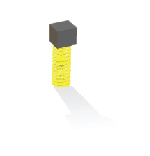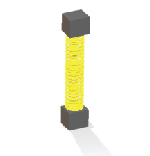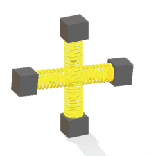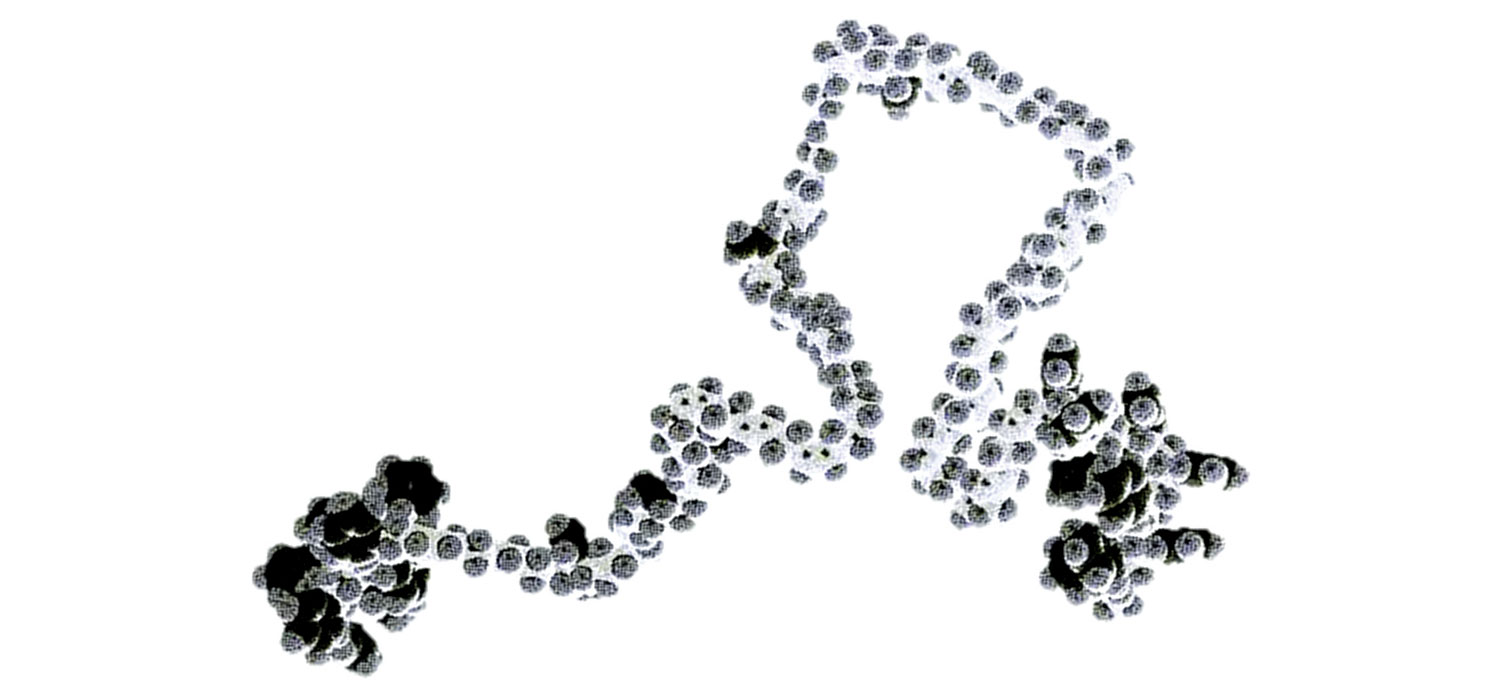What is SBS?
Styrene-butadiene-styrene (SBS) is a class of polymers commonly used worldwide since the 1970s to enhance asphalt binder performance in the paving and roofing industries. The styrene and butadiene monomers, chemical precursors, are arranged in blocks of polystyrene and polybutadiene. This combination gives SBS polymers its unique properties.
Strong Elastic Network
In SBS polymer, the blocks exist as separate phases that do not mix. Polystyrene (the grey cubes) is a hard, strong plastic. Polybutadiene (the orange springs) is resilient, soft and elastic. The polybutadiene phases tie together the polystyrene phases to provide a combination of strength, toughness and elasticity. When SBS is incorporated into asphalt binder at elevated temperatures, the polystyrene blocks dissociate, allowing the modified asphalt binder to be processed as a liquid. When the hot asphalt cools, the polystyrene blocks re-associate to form a strong, tough and elastic network. This process is reversible, providing additional flexibility to manufacturers.

Many Forms
Polystyrene and polybutadiene blocks are assembled in a variety of ways. The most common ones include:

Diblock polymers are ideal when low viscosity or tackiness is needed. Diblock grades include Kraton™ D0243 and Kraton D1118.

Linear triblock polymers provide a good balance of viscosity, elasticity and compatibility. Triblock grades include Kraton D1192 and Kraton D1101.

Radial polymers have excellent efficiency and good high temperature properties. Radial grades include Kraton D1191 and D1184.
Balanced Performance
The figure on the right illustrates typical polymer-modified binder perfomance differences resulting from the SBS polymer form used. In this experiment, asphalt binder PG64-22 or Pen50/70 was blended with 3% wt. of each polymer form (diblock, triblock and radial). The formulation included 0.1% elemental sulfur, which was added to the blend at 180°C (356°F) to crosslink the polymer (more information on this topic to come). After a 4-hour curing process, each blend was sampled for original elastic recovery in ductility bath (ASTM D6084) and rotational viscosity (ASTM D4402). The results reflect the general expected trend of increasing elastic recovery and viscosity as the polymer form shifts from diblock to triblock to radial. Please be advised that the trend’s magnitude and direction may change with increased polymer loading or adjustment of SBS molecular properties.


